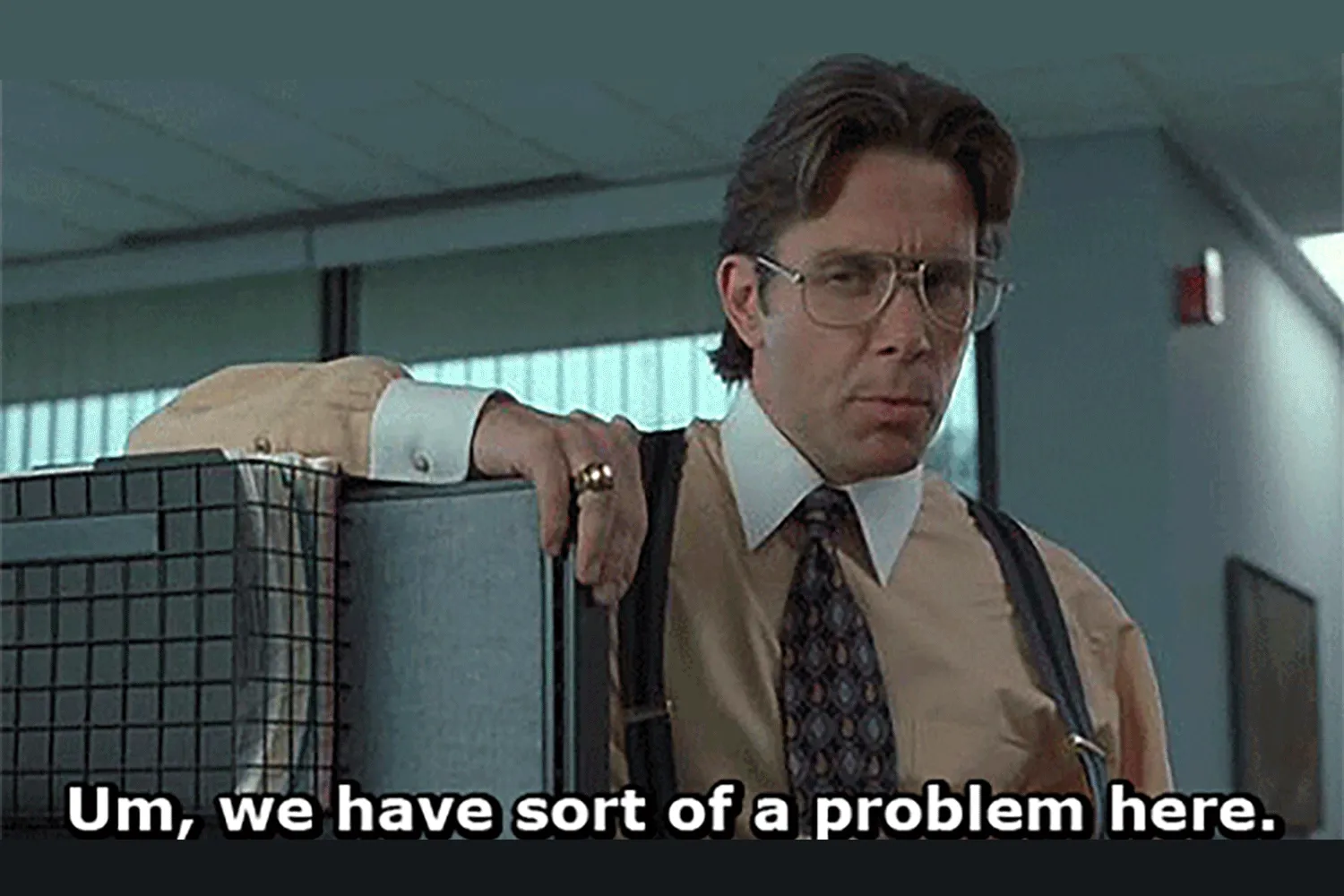Mid-range office wear is on its way out, and brands that want to stay relevant will need to pivot
“The pandemic was an accelerator on that, but it’s not a new trend that the middle has been getting squeezed,” Michael Prendergast, managing director at Alvarez & Marsal Consumer Retail Group, told Retail Brew.

Office Space/20th Century Studios via Giphy
• 4 min read
Let’s get to know each other better: If you had $300 that you could either spend on a pair of business formal pants for work or a couple of comfy athleisure outfits, which would you choose?
Well, if you think like most consumers do right now, chances are you picked the latter.
Old-school office attire may be on its way to an early retirement as most employees are still either working in hybrid (office and home) roles or are simply choosing to dress more casually.
Inditex’s latest earnings from Massimo Dutti, its mid-range office wear brand, took a hit, dropping 9.6% in the past fiscal year. The company that also owns Zara revealed revenue from the brand was at $1.7 billion, a 16% dip from 2019. Currently, Massimo Dutti is the only Inditex brand that still hasn’t recovered from losses incurred during the pandemic.
Experts believe the brand is not alone in its low sales numbers as mid-ranged office wear as a category has been impacted by both hybrid work-driven consumer habits and the cost-of-living crisis. While both budget and high-end office wear seem to be safe, mid-priced retail brands that want to stay relevant will either have to pivot their strategy to become a value brand or a high-end one.
“What we’ve seen is [hybrid work] leads to a much more casual environment because a lot of places have people coming back to work Tuesday through Thursday, while Monday and Friday are flexible. Since it’s flexible, the office is slightly empty, and so you can see people really wearing casual clothes to work,” Michael Prendergast, managing director at Alvarez & Marsal Consumer Retail Group, told Retail Brew.
Keeping it casual: And when employees do come into the office wearing their favorite pair of Lululemon pants, companies kind of don’t mind.
In fact, 62% of organizations have relaxed their dress codes over the past five years, and this trend is expected to continue, a Society for Human Resource Management survey noted.
Katie Joyce, analyst and data strategist at R/GA, added that consumer demand is also shifting toward relaxed clothing, as the average monthly Google searches for “casual wear” have increased 18% in the past year.
But a worldwide consumer shift toward staying comfy is not the only reason mid-range office wear is having a hard time. Rising cost of living has also contributed, as consumers who choose to buy office wear are either going for budget options or luxury brands.
“The highest-end luxury brands, there’s almost no impact if you look at LVMH, and the amount of growth and profitability they experienced,” Garrett Sheridan, co-founder and CEO of corporate advisory firm Lotis Blue Consulting, told Retail Brew. “However, the real pinch, if you look at increased interest, [is] people making choices around buying gas or groceries versus maybe buying a new shirt or pants, for the office.”
Joyce added that people aren’t just trading down for cheaper options; many budget-conscious consumers have in fact looked to resale for office wear instead of mid-priced brands.“
With luxury goods having high resale values, more consumers are turning to secondhand shopping to save money,” she said. “This trend is putting mid-priced companies like Massimo Dutti in a difficult position, as they don’t have the same pricing power as luxury brands but are facing increased competition from the resale market.”
Retail news that keeps industry pros in the know
Retail Brew delivers the latest retail industry news and insights surrounding marketing, DTC, and e-commerce to keep leaders and decision-makers up to date.
OK, so what now? Should mid-priced brands in the category close up shop (quite literally)?
Well, not yet. There are some retailers in the range that are getting by and even doing well. Sheridan pointed to retailers like Brooks Brothers as an example of a mid-priced office wear retailer, where the products are both relatively affordable and offer good quality. “Those brands are going to continue to persist,” he said, adding that brands that offer a larger assortment of “reliable” quality are likely to succeed.
“If I was operating that middle market for office wear, I would expand my portfolio, to include maybe lower-priced items, so that you could increase volume and maintain profitability,” he explained.
Predergast agreed, adding that this could mark the end of mid-range formal wear as we know it, or at least the way it was pre-pandemic, and that brands need to make a “conscious strategic decision”: elevate their brand status to luxury, or elevate their product assortment, but offer it within mid-range price points.
“[Office wear] is such a ubiquitous offering of product across multiple channels, whether it’s wholesale, retail, e-comm [or] resale, that it’s more competitive than ever, so companies really have to make a strategic decision to decide where they want to be,” he said. “The pandemic was an accelerator on that, but it’s not a new trend that the middle has been getting squeezed.”—JS
Retail news that keeps industry pros in the know
Retail Brew delivers the latest retail industry news and insights surrounding marketing, DTC, and e-commerce to keep leaders and decision-makers up to date.